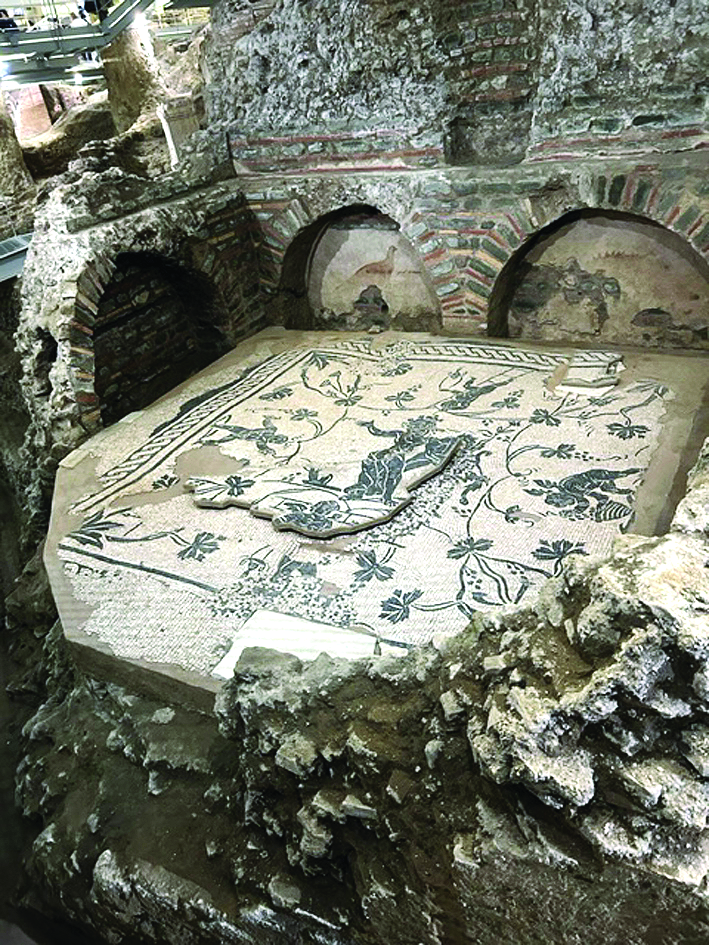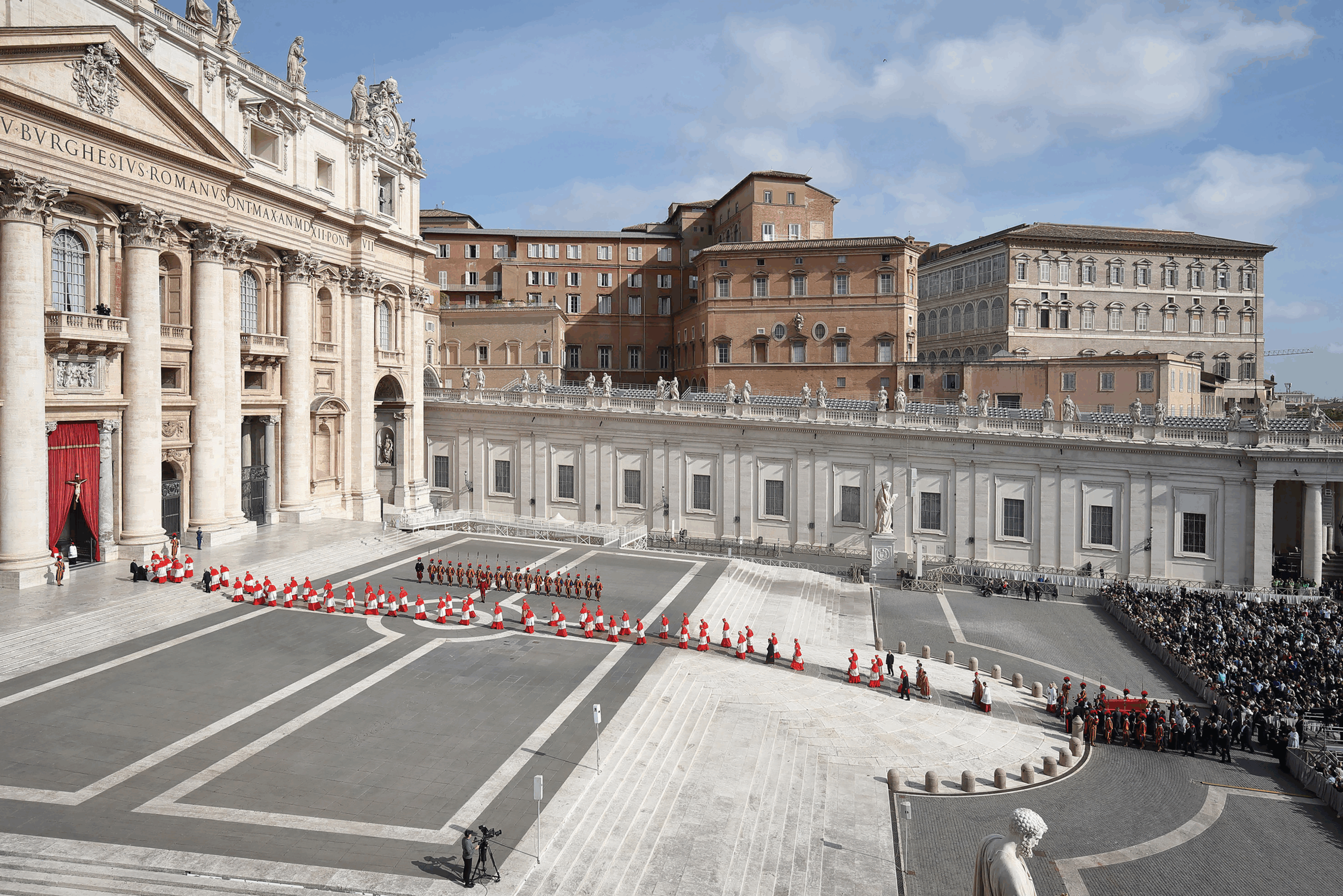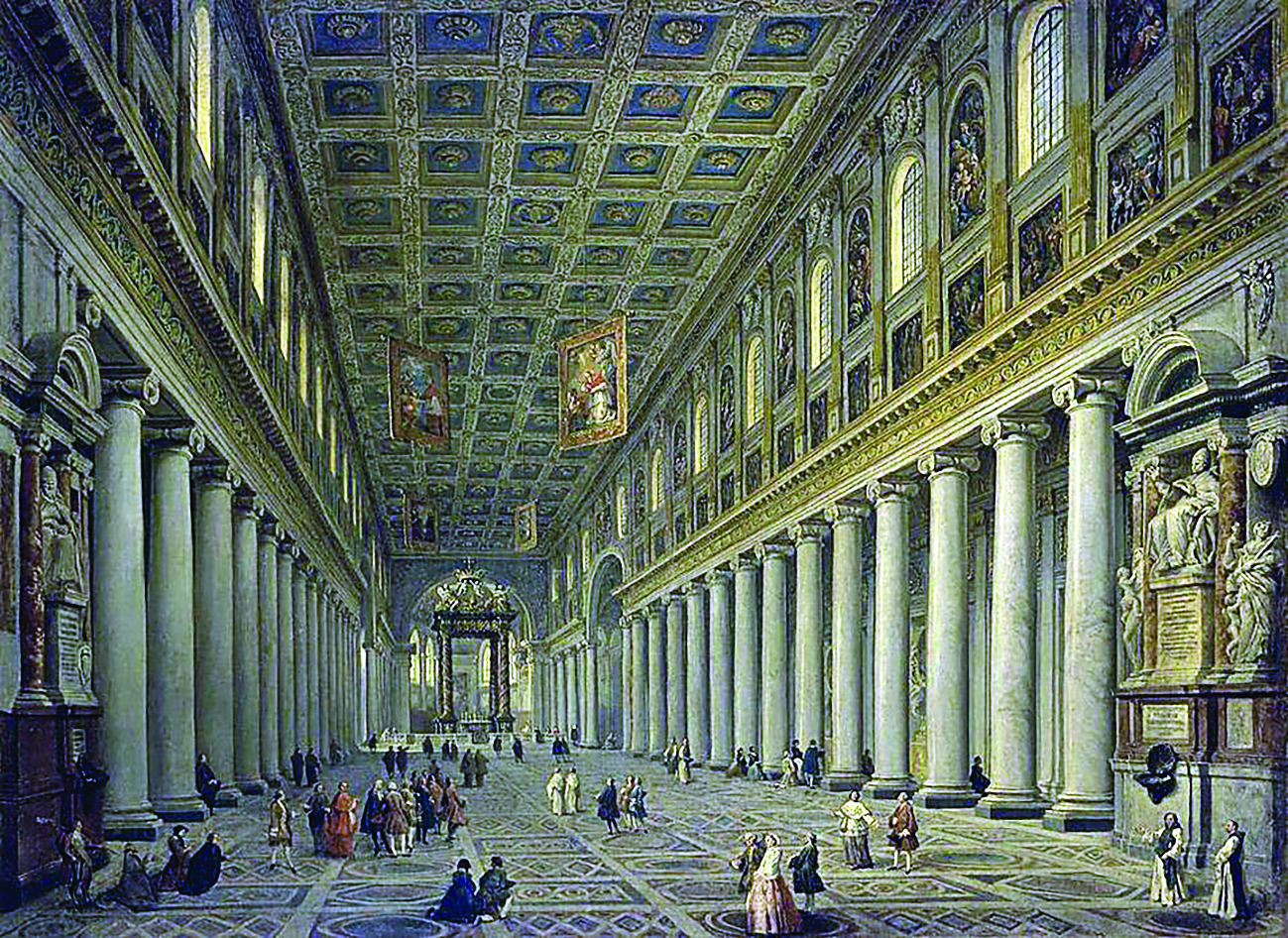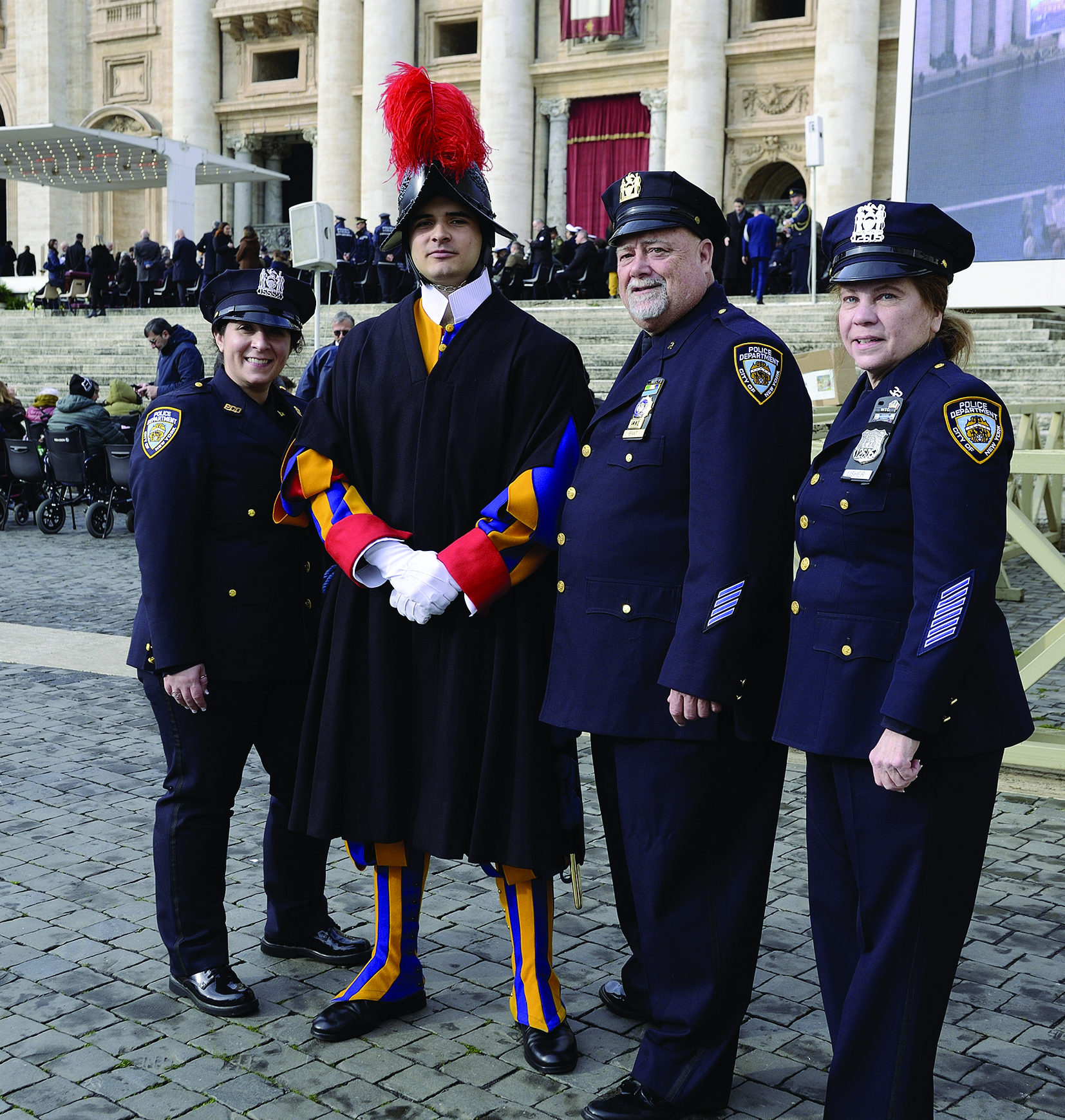By Lucy Gordan

Panoramic view of part of the Vatican necropolis
In preparation for 2025’s Jubilee, The Vatican Museums have opened to individual tourists and pilgrims an ancient Roman pagan necropolis or burial grounds. Previously it had been accessible only to select groups of scholars. Now underground, it was once street-level along the Via Triumphalis, the consular road which led from Rome 16 kms. north to Veii, once an important Etruscan city.
Roman law forbade the cremation and burial of the dead within the city for safety and hygienic reasons, but during ancient times, the area where Vatican City is today was outside the city.
It was famous for its clay quarries and parks, both private and Imperial. Caligula built his circus here; Domitian his Horti or gardens; and Hadrian his monumental mausoleum, now Castel Sant’Angelo.
With the necropolis’s entrance, separate from the Museums’, at the massive bronze Porta Santa Rosa on Piazza Risorgimento, the Museums’ intent is to exhibit in situ “Life and Death in the Rome of the Caesars.” Open on Friday afternoons and on Saturdays, tickets must be booked on the Vatican Museums website www.vaticanmuseums.va at least 24 hours beforehand. However, be aware there’s no cloakroom and no accessibility for people with ambulatory problems, for baby strollers or wheelchairs. Individual tickets cost 8.50 euros or, for a group of up to 25 with a guide, 20 euros each. The guided tour, available in English, Spanish, French, German and Italian, lasts an hour and a half. However, if you prefer to go at your own speed the explanations on inter-active touch-screens, the wall panels, and the exhibition cards explain the history and the artifacts clearly both in Italian and in English. Admission to The Vatican Museums (29 euros) is a separate ticket.

A reconstruction of how the necropolis may have looked 2,000 years ago when St. Peter was executed and buried here (Photos are courtesy of Vatican Museums)
The burials in the necropolis of Via Triumphalis (spanning c. 10,764 square feet) are seen from above from catwalks. They date from the first century BC to the fourth century AD, specifically from 22 BC to 337 AD. Some were unearthed in 1956 by chance during the excavation of the Vatican Autoparco or garage. In 2003, another sector known as “Santa Rosa” was discovered during the construction of a parking lot. Between 2009 and 2011 the two sectors were joined and in 2013 opened to a limited and scholarly public thanks to the generosity of the Canadian Chapter, especially Paul and Carol Hill, of the Patrons of the Arts in the Vatican Museums, while further excavation, conservation, and this year’s “musealization” are thanks to the Washington DC Chapter. For it must be remembered that archeological sites must be maintained even more assiduously than their artifacts, which can be safely placed in climate-controlled glass display cases.

The shrine of Tiberius Natronius Venustus (Photo Lucy Gordan)
This necropolis is well-preserved thanks to a late 4th-century AD landslide which covered it with mud. It’s still being excavated and restored even during visiting hours. What an added perk to watch the archeologists and restorers at work!

A sleeping lanternarius (lantern carrier) (Photo Lucy Gordan)
The necropolis is unique because of its large size and because none of its 40 tombs and none of the 200 individual burials excavated so far, belonged to aristocrats. Instead, they belonged to slaves (many of whom belonged to the emperor Nero) and members of the lower and middle classes: liberti or freedmen, and artisans. Many couldn’t afford to build a tomb for themselves, although some had enjoyed upward social mobility. Most, just like the mausoleums of today’s cemeteries, were “collective” for entire families. We know the identity of a few: the inscription and carving on his stele tells us Alcimo was Nero’s slave in charge of the scenery of Pompey’s Theater, ancient Rome’s largest theater, near where Julius Caesar was murdered; freedman Tiberius Claudius Optatus, who’s buried here with his family, was the archivist of Imperial accounts for the infamous emperor Nero; Clement, a horse trainer and charioteer, and the epitaph of Lucio Sutorio Abescante says he lived to be ninety years old (qui vixit LXXXX), to name just a few.

Below, a third-century sarcophagus (Photo courtesy of Vatican Museums)
Some of the tombs here still show traces of stucco, frescoes (usually of plants, flowers, and birds, with red snakes indicating the deceased were Egyptian slaves or artisans) and mosaic floors (the most special one depicts with black and white tesserae a drunken Bacchus at its center surrounded by Erotes harvesting grapes and is the only image or mention of a pagan god in the necropolis.
The necropolis also reveals fascinating details about ancient Roman burial rituals and funerary practices and how these changed during its several centuries of use. At first, the dead were cremated on an ustrinum or funeral pyre using pinecones and pine-nuts to light the fire after which their ashes were put in wooden urns. In later times the ashes were put in clay pots. During cremation the rite was accompanied by a banquet. Once the cremation was completed, the burned bones were gathered, washed and placed inside the urn, which then could be placed in the “collective” tomb or simply directly in the ground with no particular order. Still later, cremation was abandoned and the dead, dressed in their best and most colorful clothes, were buried in hollowed-out tree trunks in less-expensive open graves as proved by the numerous visible skeletons. They were once wrapped in shrouds, now of course long decayed, and covered with earth and leaves. Lastly, remains of the dead were placed in beautiful marble sarcophagi often with scenes of the deceased’s life plus a portrait.
Glass cases along the peripheral walls contain oil lamps, urns, pots, amphorae, shrines, coins, numerous bent nails (symbols of a guaranteed home in the afterlife) several marble sleeping lanternarii (lantern-bearers, slaves who accompanied their masters to events at night and then fell asleep waiting to bring them home again) used as lids for cinerary jars, and ceramics used by relatives and friends during funeral banquets and memorial visits.

A mosaic floor, an image of a drunken Bacchus at its center (Photo Lucy Gordan)
The most moving artifact is the marble shrine of Tiberius Natronius Venustus. Its inscription says he lived four years, four months, and 10 days.
Because of the necropolis’s present location in Vatican City, it may seem odd that none of the graves belonged to Christians, but it’s easily explainable. During the three and a half centuries the necropolis was in use, Christians were persecuted and buried in secret catacombs not openly along a main road. Then shortly after Constantine the Great legalized Christianity so Christians too could have been safely buried here, the mudslide providentially buried the necropolis for over 1,500 years.
For the complete story of the necropolis, Italian-speakers can order from the Vatican Museums website, La necropolis Vaticana lungo la Via Trionfale, De Luca Editore d’arte-Musei Vaticani, Rome, 2006, 15 euros, written by Francesco Buranelli et al. when Buranelli was Director of the Vatican Museums. Pope Benedict XVI then appointed him Secretary of the Pontifical Commission for the Cultural Patrimony of the Church. See my interview “Francesco Buranelli: The Curia’s Only Lay Secretary,” ITV, March 2011.






Facebook Comments